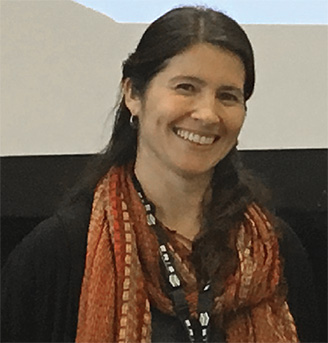Baker City Community Partnership, Oregon

Historic Baker City
Partnership: Baker Technical Institute (BTI) teachers and students are the first in the country to include brownfields as part of their school curriculum, educate their community about contamination and land reuse, and work with their city to increase funding opportunities to clean up and redevelop brownfields.
Goal: To evaluate general health effects of contamination from and distress about brownfield sites
To clean up sites for land reuse, redevelopment, and green space
Community and population:
- Community built on logging and mining
- Less than 10,000 inhabitants
- Median income: $21,779
- 11.5% of population below poverty line
- Negative job growth -2.18%

Map of Baker City showing brownfield sites. Source: Megan Alameda and Baker Technical Institute Students, 2016.
- 80 potential brownfields in 7 square miles (2nd highest rate per capita in OR), mostly machine shops and gas stations lining old highway 30
- 45 brownfields with known or suspected contamination, 25 contaminated with petroleum products
- 15 brownfields close to Powder River, which runs through the middle of town
- Contaminants: arsenic, methane (from old landfill), pesticides, petroleum products, and solvents
- Leading causes of death: heart disease and cancer
- Cancer rate above state and national averages
- Higher mortality rates for breast, colorectal, prostate, and lung cancer than neighboring cities

Megan Alemeda launched the brownfields curriculum at Baker Technical Institute.
Good news!
Former BTI high school teacher Megan Alameda established a high school brownfields assessment class that has run for four years. She started the class when a property bequeathed to BTI turned out to be a brownfield. The class acts as project manager for assessment and cleanup activities. It is likely the only high school class in the country engaged in brownfields assessment and cleanup. In 2016, Alameda was awarded the Presidential Innovation Award for Environmental Educators.
BROWN assistance and collaboration
- Guidance for funding, resources, development of Brownfields Redevelopment Authority (BRA), and potential BRA partners
- Two reports from BROWN member on how to establish a Brownfield Redevelopment Authority
- Brownfields site inventory by students; BTI working with stakeholders to expand brownfields program
- $200,000 EPA Brownfields Assessment Grant awarded fall, 2017; application for another grant in fall 2018
- BTI student PhotoVoice poster depicting 30 brownfields in downtown Baker City (used at community meetings)
- Two BTI student meetings with City officials and residents, highlighting student concerns about brownfields using PhotoVoice display
- ATSDR webinar training on Brownfields/Land Reuse Site Tool and Land Reuse (Healthfields Toolkit)
- ATSDR/Oregon Health Authority classroom involvement with BTI students on community engagement and land reuse skills
- Student inventories of 30 potential brownfields sites
References:
Baker Technical Institute Students. (2017). Baker City Businessess: Statistics and Conclusions. Baker City, OR: Baker Technical Institute.
Department of Environmental Quality. (Undated, accessed July 3, 2018). Environmental Cleanup Site Information. Retrieved from Oregon.gov:
https://www.oregon.gov/deq/Hazards-and-Cleanup/env-cleanup/Pages/ecsi.aspx
United States Census Bureau. (2017, July 1). Community Facts Baker City city, Oregon, 2017 Population Estimate (as of July 1, 2017). Retrieved from American Fact Finder: https://factfinder.census.gov/faces/nav/jsf/pages/community_facts.xhtml
Zawadzki, G. (Undated). Establishing a County Brownfield Redevelopment Authority. Lansing: Michigan Association of Counties.